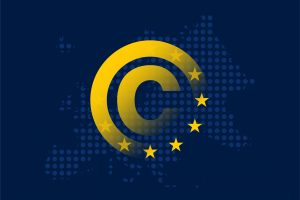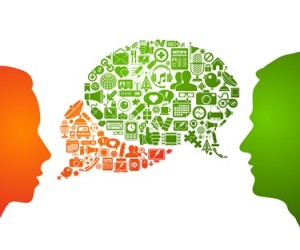The journey by which the blockchain and its underlying distributed ledger technology (DLT) becomes an everyday aspect of doing business is one of a thousand small steps, many of them legislative and regulatory. In “California’s New Law on Corporate Blockchain Use,” Riaz A. Karamali examines California’s recently signed SB-838, which amends Cal. Corp. Code § 204 (General Corporation Law) and Cal. Corp. Code § 2603 (Social Purpose Corporation Act) to allow certain corporations to use blockchain technology for certain corporate records. (Legislation triggering the formation of a “blockchain working group” that will evaluate the risks and legal implications associated with the use of the technology by state government and California-based businesses was also signed into law.)
Are Your Patents Covered?
Too often, a company with a new, promising product is caught by surprise when a competitor asserts an infringement claim against it on the technology underlying the product. Sometimes, the surprise isn’t that such a claim has been made, but rather that the company’s CGL insurance doesn’t have—or expressly excludes—patent coverage. Over at Policyholder Pulse, our colleague Sean Williams examines this all-too-common quandary and looks at some options for “Plugging the Patent Coverage Gap.”
Of Memes and Monetizing: Could the EU Directive on Copyright Change the Way We Speak Internet?
 Do you like getting your news online, sharing videos or tweeting memes? A little piece of legislation known as The European Union Directive on Copyright in the Digital Single Market may signal the end of some of the internet’s simple pleasures. On September 13, the European Parliament approved new legislation that would overhaul the region’s approach to copyright law. As with the EU’s privacy regulations, the legislation could have an impact far beyond Europe, redrawing the lines of liability that exist between poster, publisher and platforms. Not surprisingly, technology companies and publishers like Google, Amazon, and Wikipedia strongly opposed the legislative changes.
Do you like getting your news online, sharing videos or tweeting memes? A little piece of legislation known as The European Union Directive on Copyright in the Digital Single Market may signal the end of some of the internet’s simple pleasures. On September 13, the European Parliament approved new legislation that would overhaul the region’s approach to copyright law. As with the EU’s privacy regulations, the legislation could have an impact far beyond Europe, redrawing the lines of liability that exist between poster, publisher and platforms. Not surprisingly, technology companies and publishers like Google, Amazon, and Wikipedia strongly opposed the legislative changes.
Hiring, Firing and HR Rewiring: Human Resources in the Age of Social Media
 In the last decade, social media platforms have embedded themselves in the human resources function in companies worldwide. Companies like LinkedIn and Indeed have built empires based on clever deployment of social media to assist in the hiring and networking processes, even as human resource professionals use social media for more than finding the next great executive or software engineer to propel the business forward. Social media plays a key role in hiring, firing and all aspects of employee management and relations. Various studies and surveys have shown that up to 80% of all companies make some use of social media platforms in human resource decisions.
In the last decade, social media platforms have embedded themselves in the human resources function in companies worldwide. Companies like LinkedIn and Indeed have built empires based on clever deployment of social media to assist in the hiring and networking processes, even as human resource professionals use social media for more than finding the next great executive or software engineer to propel the business forward. Social media plays a key role in hiring, firing and all aspects of employee management and relations. Various studies and surveys have shown that up to 80% of all companies make some use of social media platforms in human resource decisions.
A Taxing Decision: Choosing between C Corps, S Corps and LLCs
Forming a legal entity is one of the first big steps for a startup, so if you have reached this stage, congratulations! Now comes the hard part: choosing which type of legal entity to form. Company founders often ask us for advice on the kind of entity they should form. For many startups, making the right decision on the type of entity makes it easier to attract investors and recruit and retain employees. The wrong decision can lead to unnecessary tax burdens, time-consuming legal formalities or roadblocks while trying to attract investors. So what are my options as a company founder? Let’s dive in:
Delaware 101: Why Is Everyone Incorporating There?
 Whether you started thinking about incorporating earlier this morning or you’re a serial founder about to launch your fifth unicorn, the Delaware incorporation might seem like an odd phenomenon. We often hear “Why do so many companies incorporate in Delaware?” and “I’m a proud Californian—I’ve never even heard of Rehoboth Beach!” While there are situations where we advise clients to incorporate in states other than Delaware, the truth is that Delaware is often the best choice—and likely not for the reasons you may have heard. For example, Delaware does not have special rules allowing secret corporations, is often not the cheapest jurisdiction for incorporation, and is not some sort of tax haven. That being said, setting up shop in Delaware does offer compelling perks.
Whether you started thinking about incorporating earlier this morning or you’re a serial founder about to launch your fifth unicorn, the Delaware incorporation might seem like an odd phenomenon. We often hear “Why do so many companies incorporate in Delaware?” and “I’m a proud Californian—I’ve never even heard of Rehoboth Beach!” While there are situations where we advise clients to incorporate in states other than Delaware, the truth is that Delaware is often the best choice—and likely not for the reasons you may have heard. For example, Delaware does not have special rules allowing secret corporations, is often not the cheapest jurisdiction for incorporation, and is not some sort of tax haven. That being said, setting up shop in Delaware does offer compelling perks.
Section 230 and Keeping the Trolls at Bay: Twitter Obtains a Significant Legal Victory on Content Control
 A California state appellate court sided with Twitter and put a halt to a lawsuit filed against the social media service by white nationalist Jared Taylor. In the lawsuit, Taylor alleges he was wrongly banned from Twitter in December 2017 when Twitter permanently suspended Taylor and his publication, American Renaissance, soon after it announced a crackdown on “violent extremist groups.” In his lawsuit, Taylor claimed that the Twitter account suspensions violated several California laws, including one dealing with unfair business practices.
A California state appellate court sided with Twitter and put a halt to a lawsuit filed against the social media service by white nationalist Jared Taylor. In the lawsuit, Taylor alleges he was wrongly banned from Twitter in December 2017 when Twitter permanently suspended Taylor and his publication, American Renaissance, soon after it announced a crackdown on “violent extremist groups.” In his lawsuit, Taylor claimed that the Twitter account suspensions violated several California laws, including one dealing with unfair business practices.
News of Note for the Internet-Minded – 8/22/18 – AI, Algorithms and the Virtual People of Walmart?
Black Boxes, Bad Data and Being Wary of AI in the Boardroom
In his recent commentary, AI: Black boxes and the boardroom, colleague Tim Wright examines how well-founded concerns over the inscrutability of artificial intelligence processes and the bad outcomes that can be triggered by bad data can be alleviated by certain common sense approaches in the boardroom.
Can a Reporter’s Twitter Account Be a Newspaper’s Trade Secret?
 Does one person’s Twitter account a trade secret make? A newspaper in Virginia apparently thinks so. This past week, the owner of The Roanoke Times sued former Virgina Tech sports reporter Andy Bitter under the federal Defend Trade Secrets Act, among other things, because he refused to give up the login information for a Twitter account.
Does one person’s Twitter account a trade secret make? A newspaper in Virginia apparently thinks so. This past week, the owner of The Roanoke Times sued former Virgina Tech sports reporter Andy Bitter under the federal Defend Trade Secrets Act, among other things, because he refused to give up the login information for a Twitter account.
 Internet & Social Media Law Blog
Internet & Social Media Law Blog




